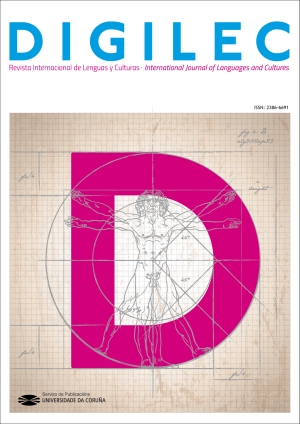The profile of the governess and Victorian female education in Agnes Grey by Anne Brontë
Main Article Content
Abstract
In Victorian novels, the character of the governess is very interesting because of the uniqueness of her own upbringing and the particularities surrounding the practice of her profession. In Agnes Grey by Anne Brontë, the author draws an occupational, social and psychological profile of the protagonist that is determined by social exclusion and alienation. The governess is a woman who distances herself from the feminine archetypes of society. We are talking referring to an educated and well-read woman who is criticized for her hobbies, a figure that borders on the maternal, but whose affection and authority are disdained because she is not a mother, a young single woman whose sexual drive and possible attractiveness must be repressed, an example of essential Christian virtues to guide their pupils that nevertheless, disregard her advice. The story of Agnes Grey allows us to draw a general picture of the personality and performance of her professional colleagues and offers us an unflattering image of a trade that, in principle, could be enormously rewarding.
Keywords:
Downloads
Article Details
References
Barker-Benfield, G. J. (1992). The Culture of Sensibility: Sex and Society in Eighteenth-Century Britain. University of Chicago Press.
Brontë, A. (2020). Agnes Grey. Austral.
Broughton, T. L. (1997). The governess: an anthology. Sutton Publishing.
Catelli, N. (2008). Prólogo. En C. Brönte, El profesor (pp. 5-8). RBA.
Clark, L. J. (2003). From the Margins to the Centre: The Spinster as Author, Narrator and Actor. The Burney Journal, 6, 36-54.
Correa Ramón, A. (2006). El siglo de las lectoras. En M. P. Celma Valero y C. Morán Rodríguez (Eds.), Con voz propia. La mujer en la literatura española de los siglos XIX y XX, (pp. 29-39). Fundación Instituto Castellano y Leonés de la Lengua.
Duby, G. & Perrot, M. (1993). Historia de las mujeres en Occidente, El siglo XIX. Taurus.
Fernández Mosquera, A. I. (2015). La family novel inglesa del siglo XIX: el modelo femenino de Charlotte Yonge. [Tesis doctoral, Universidad de Vigo]. https://www.investigo.biblioteca.uvigo.es/xmlui/bitstream/handle/11093/440/La%20family%20novel%20inglesa%20del%20siglo%20XIX.pdf?sequence=1&isAllowed=y
Galán Rodríguez, N. (2020). Miss Jane and miss Eyre: de alumna a profesora en Jane Eyre. DIGILEC Revista Internacional de Lenguas y Culturas, 7, 61-72. https://doi.org/10.17979/digilec.2020.7.0.7102
García Doncel, M. R. (1988). El modelo femenino en Jane Eyre. Servicio de publicaciones de la Univerdidad de Cádiz. https://tiendaeditorial.uca.es/descargas-pdf/8477869545-completo.pdf
Gaskell, E. (2016). Vida de Charlotte Brontë. Alba Minus.
Hill, B. (2001). Women Alone: Spinsters in England, 1660-1850. Yale University Press.
Hughes, K. (2001). The Victorian governess. Hambledon and London.
Martínez Martín, J. A. (2001). La circulación de libros y la socialización de la lectura. Nuevos públicos y nuevas prácticas. En J. A. Martínez Martín (Coord.), Historia de la edición en España (1836-1936), (pp. 455-472). Marcial Pons.
Pardo Bazán, E. (1976). La mujer española y otros artículos feministas. Editora Nacional.
Pérez Porras, A. (2018). La educación y el progreso social en la Inglaterra victoriana: El caso de Emily Brontë en Wuthering Heights. Em J. D. Sánchez, M. E. Jaime de Pablos y M. Borham Puyal (Coords.), La Universidad con perspectiva de género (pp. 253-265). Ediciones Universidad de Salamanca. https://gredos.usal.es/handle/10366/138843
Regás, R. (2008). Prólogo. En G. Elliot, Middlemarch (pp. 7-12). RBA.
Rubio Céspedes, D. (2018). Lienzo en blanco: construcción y desviación en la identidad de la institutriz victoriana. [Tesis de Grado, Universidad de los Andes, Bogotá]. https://repositorio.uniandes.edu.co/bitstream/handle/1992/39373/u821347.pdf?sequence=1&isAllowed=y
Simón Hernández, F. (2017). El estereotipo de la solterona: literatura y construcción social en la Inglaterra de Jane Austen (1775-1817). Revista de historiografía, 26, 125-148. https://doi.org/10.20318/revhisto.2017.3702
Walker Gore, C. (2014). Setting Novels at Defiance: Novel Reading and Novelistic Form in Charlotte M. Yonge’s The Heir of Redclyffe. Nineteenth-Century Gender Studies, 10(1).
Wilks, J. (2019). The Tory Baronet, Or Tories, Whigs, and Radicals. Creative Media Partners, LLC.
Woolf, V. (2012). Una habitación propia, Alianza.


